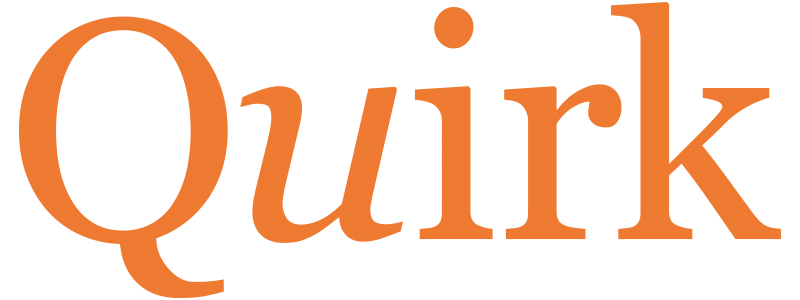In this week’s podcast, we discuss two techniques – empowered delegation & closed-loop communication – that can help our organisations harness the collective innovation and intelligence of the people working within our organisations. We are constantly striving to improve our business performance and achieve greater success but all too often don’t do so effectively or in a controlled manner. Using these two techniques that are well established in the military, enables us to set a framework for people to work within with clear parameters, all the while ensuring that those parameters and objectives have been clearly understood. When used together our organisations can achieve greater success while managing the risk.
Listen to the podcast:
Full Podcast Transcript can be found here:
Hi there and welcome to another of our podcasts in the series we’ve been doing. Today what I am going to be talking about is how to get the most out of your people and how they can start to perform for you in a much more efficient and effective way. Now there is a technique that the military use called “Mission Command”. It is essentially about empowering people but within a delegated framework.
There are other organisations that have been known to use it. The post office have used it and they call it freedom within a framework, which I think is a really nice way of capturing it. In essence what it means is that you don’t say to your people “I want you to do this, on this day, at this time and in this way” and be very specific. Instead, you say to them “Look, this is what I’m trying to achieve. This is where I am trying to get to and these are my objectives. Here is the style or the manner in which I see us getting to those objectives”, whether we’re high risk or not and then you set out some parameters. You then allow the people to operate with absolute freedom within those parameters. So they now are able to go away, consider what you are trying to achieve, think about how they can use their own experience and their own intellect and their own innovative spirit to deliver to those objectives provided they stay within the boundaries that you have set, hence freedom within a framework.
The nice thing about the technique is that in giving people parameters to operate within, you control the risk. You can set something around those individuals that mean that if they do get something wrong or they do go slightly awry, then they are never going to cause a catastrophic failure. They are only ever going to cause a problem that is within a risk tolerance that you have already set and put in place. So, it starts to allow the collective intellect of the organisation to function better because instead of one individual having to come up with all the ideas, all the plans, all the development and run all the decisions, you start to delegate some of those decisions down but do it in a really powerful way.
Not only are you using the collective intelligence of the whole organisation but you are also giving them a sense of ownership and because they feel like they have come up with the plan themselves or their part of the plan themselves and they’ve been given the freedom to do so, they are much more motivated, they are much more bought in and therefore they want to see the plan succeed. So, it’s a way of controlling risk, empowering people but also getting them to commit to action.
The one thing that often happens in businesses is that people will turn around and say “I told somebody to do something and they didn’t deliver it”. Now, it might be because they feel they haven’t had the right sort of delegations and that’s what this freedom in a framework technique starts to help with. But the other reason that people might not deliver in the way that you’ve asked them to is because they got a very different understanding of the technique in the first place or of what you told them to do and of the task.
I can almost guarantee that everybody listening to these podcasts will have a subtly nuanced understanding of what I’ve been saying based on their background, their experiences or even what’s happened that day. And so actually it’s really important to go back and check what people have understood of what you have told them. Sometimes, yes, people won’t deliver what you have told them to because they disagree with you but rather than say “I disagree with you” they say “yes, that’s absolutely fine, I’ll go away and do that” and then they simply refuse to do it.
Other times you will find yourselves maybe two months or three months into an initiative and you’re not where you thought you were going to be. And you sit there and say “Well, how have we ended up in this place?” And it’s because some of your team that are working for you haven’t necessarily set out to try and sabotage your plan, it’s just that they had a different understanding than you of what you told them to do. They’ve listened to what you have told them, they think they’ve got the understanding and they’ve gone away to now to action it. But actually, it’s slightly different from what you wanted them to deliver.
One of the important techniques that you should use matched to this freedom within a framework is closed-loop communication. Getting people to reaffirm back to you what they have heard so that you can check their understanding. So, if you have said to somebody, “Here are my objectives, this is what I’m seeking to achieve, here is the style in which I want to do it and here are some boundaries within which you’ve got complete freedom of action”, what you then do is say to them “Go away now, have a think about this (for however long you want to give them: an hour, two days, three days) then come back me and tell me how you are going to deliver your part of my plan”.
That allows you to do a couple of things. The first is, as they are telling you what their plan is, you can check very quickly whether they’ve completely understood what you wanted them to do in the first place. Because if their plan is going off the tangent obviously they didn’t and you need to correct that. The second thing you can do is to sit there and say “Well, I get what you are trying to do, I get your plan but with my experience or knowledge or particular expertise in a particular area, I could suggest to you that there is a better way of doing this particular facet of your plan”. And that really helps people, you are almost doing a coaching and mentoring piece. The third thing that a piece of feedback does and a back brief does, is that as the person is back briefing you and telling you about their plan it might be that they feel the delegations you’ve given them, the framework you’ve given to operate in, is too small and that they can’t achieve what you have asked them to achieve within the risk tolerances that you set them. And so they need a bigger envelope from which to operate in.
All of that helps to drive things forward in a really accurate and efficient way. Bringing together freedom in a framework and closed-loop communication can really start to turbocharge the business. And it can cascade all the way down through the business if you are quite a large organisation. Then people can have different levels of freedom in a framework as you go down through different levels of the organisation. An interim manager or midscale manager can give freedoms to the people that work for him and they can, in turn, give freedoms to the people that work for them. And everything starts to add up to the single point of focus and the compass heading that’s been set by the senior leadership.
It’s worth thinking about because if you want to become efficient and if you want to become effective and not have everybody coming to you all the time asking you what decisions need to be made because it seems you are the only person that can make them, then very quickly the organisation starts to slow down and become ineffective. So, freedom in a framework and closed-loop communication can really help to take things forward in a very positive way. I hope that you will enjoy using the technique and trying the technique. And I will enjoy some of the feedback that might come back to us about the difference it has or hasn’t made.



